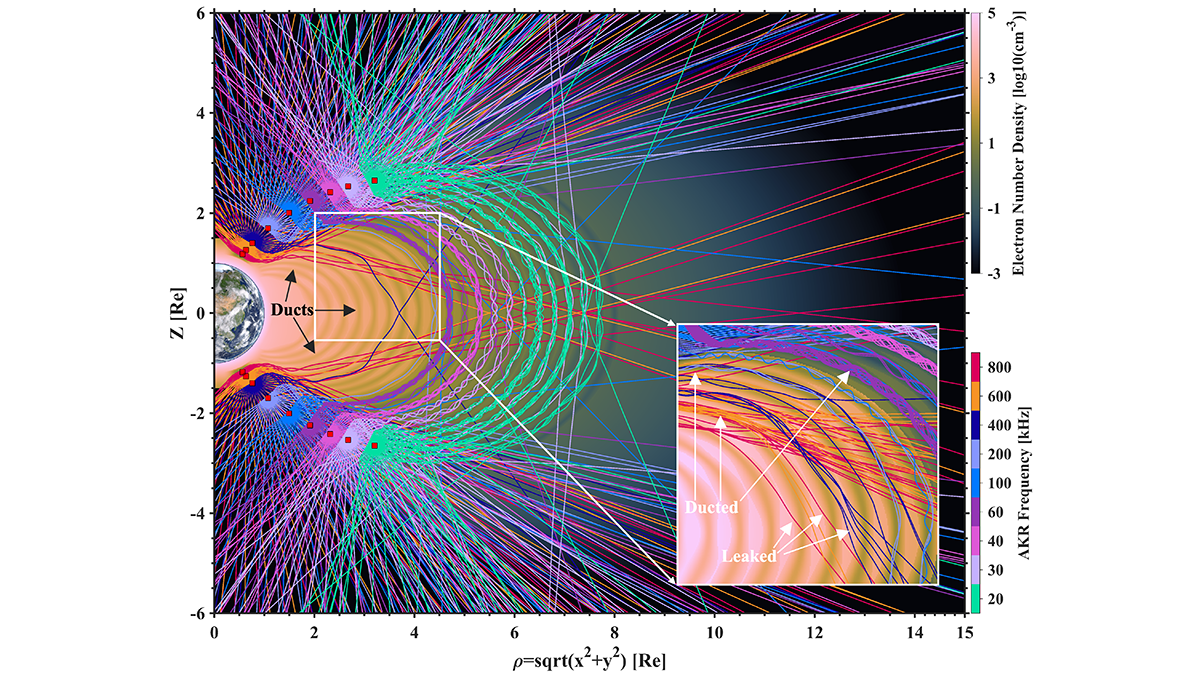Editors’ Highlights are summaries of recent papers by AGU’s journal editors.
Source: AGU Advances
Auroral Kilometric Radiation (AKR) is a type of radio wave emitted from Earth’s auroral regions. It is the dominant radio emission from Earth and has been extensively studied, though previous analyses were constrained by limited spacecraft coverage.
Today, with the availability of more spacecraft observations, it is possible to improve our understanding of the Earth’s most intense natural radio emission. Thanks to these data, Wu et al. [2025] find that Auroral Kilometric Radiation preferentially occurs at high-latitudes and on the Earth’s night-side. They also found that the dense plasmasphere, which is a region of high-density plasma around Earth, blocks AKR from traveling, thus forming an equatorial shadow zone around the plasmasphere. Furthermore, the authors discover that the low-density ducts within the plasmasphere act as waveguides, enabling AKR to penetrate the dense plasmasphere and propagate along these channels.
The findings provide valuable insights into Earth’s electromagnetic environments, space weather events and geomagnetic storms that may adversely affect satellites, communication systems, GPS, and power grids on Earth.
Citation: Wu, S., Whiter, D. K., Zhang, S., Taubenschuss, U., Zarka, P., Fischer, G., et al. (2025). Spatial distribution and plasmaspheric ducting of auroral kilometric radiation revealed by Wind, Polar, and Arase. AGU Advances, 6, e2025AV001743. https://doi.org/10.1029/2025AV001743
—Alberto Montanari, Editor-in-Chief, AGU Advances

